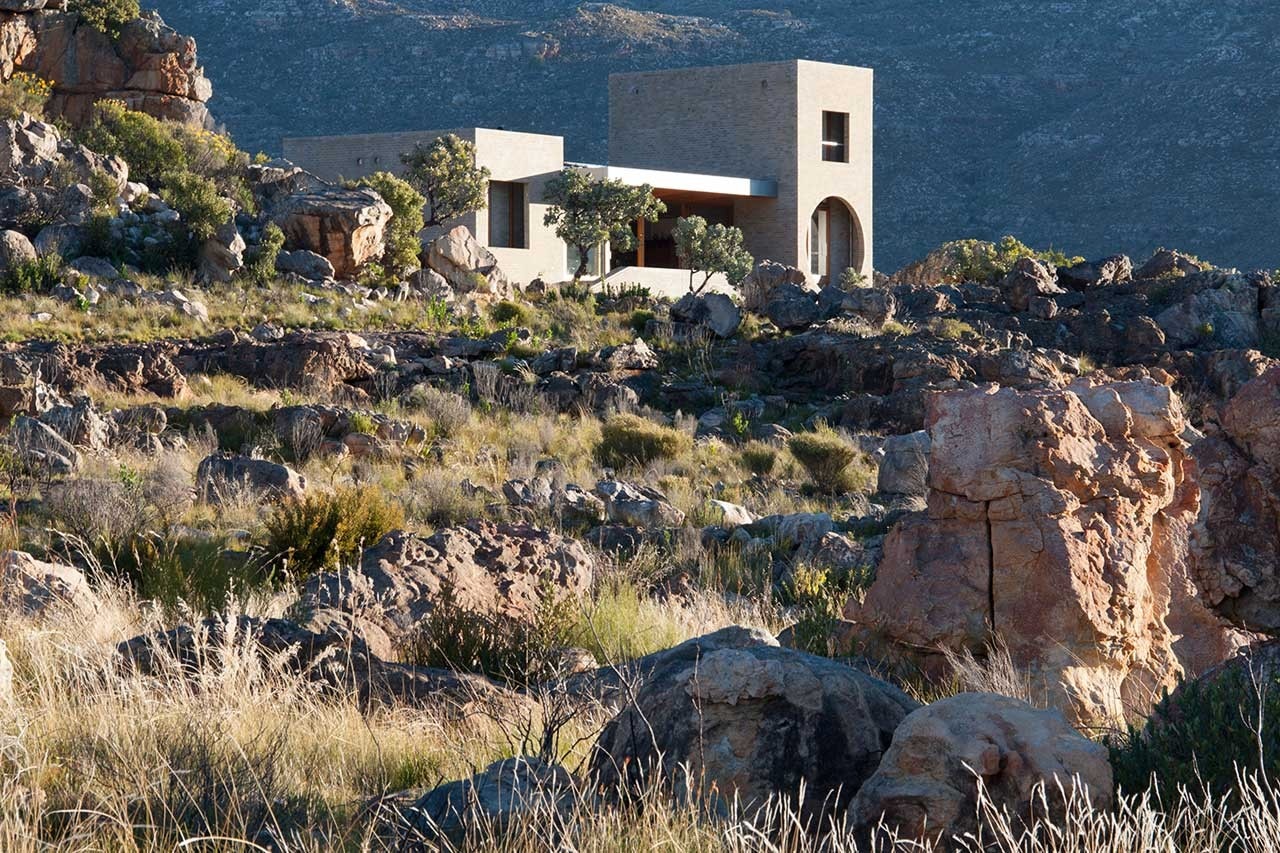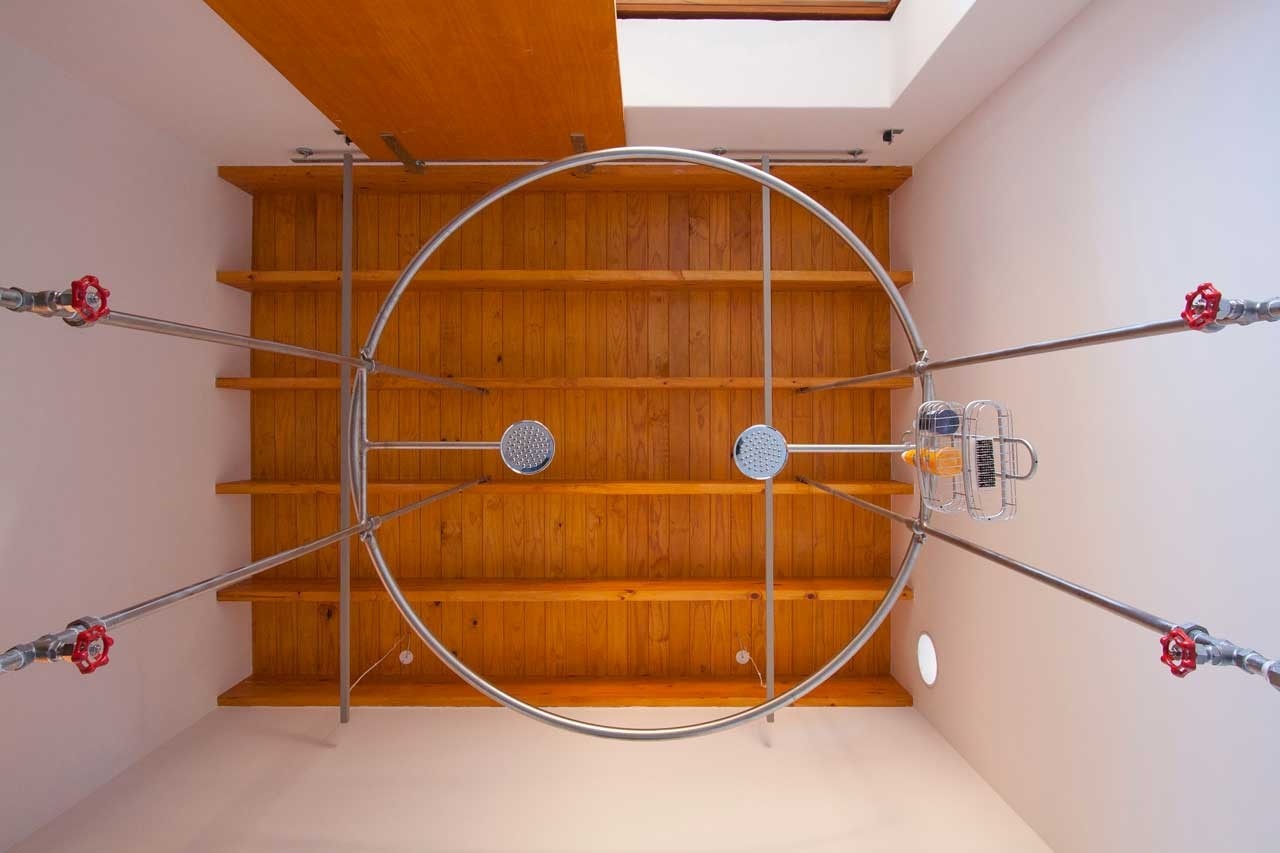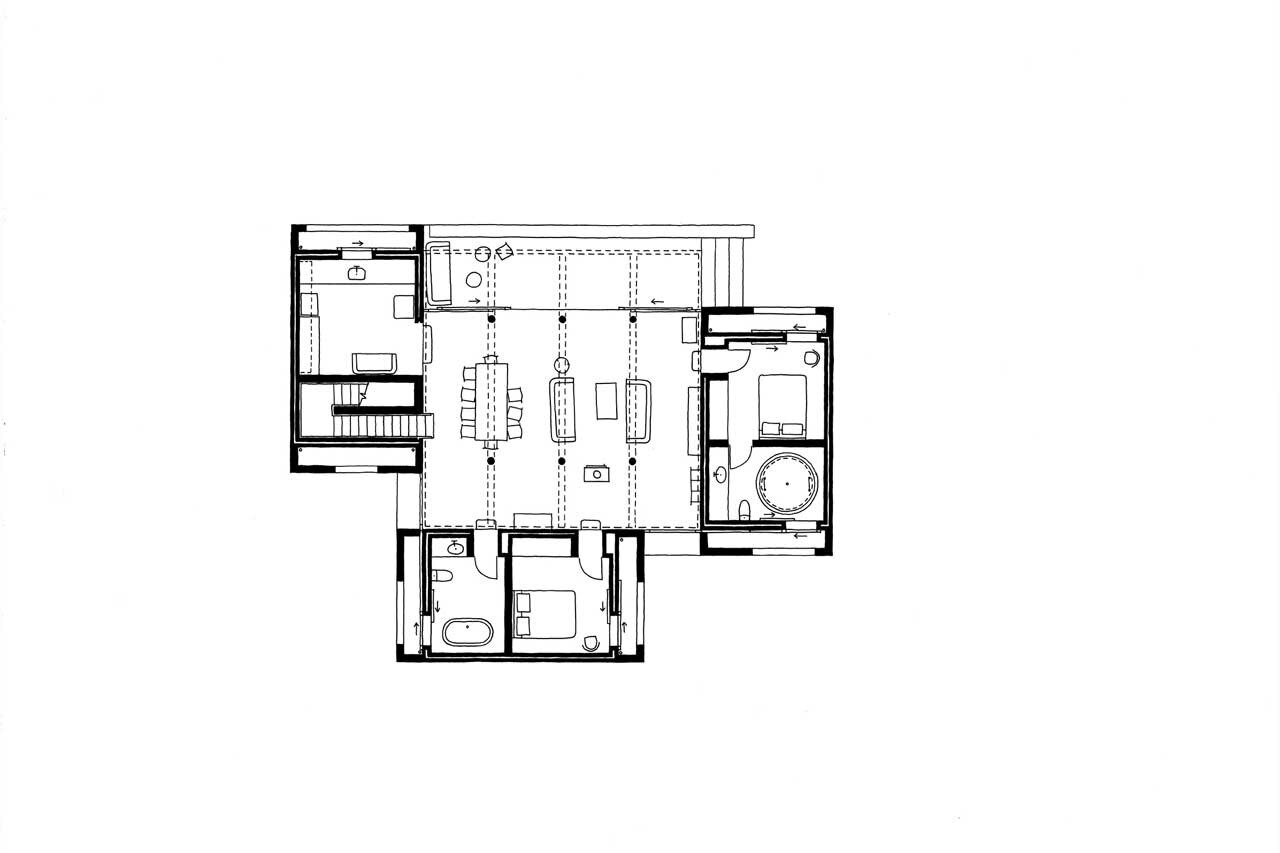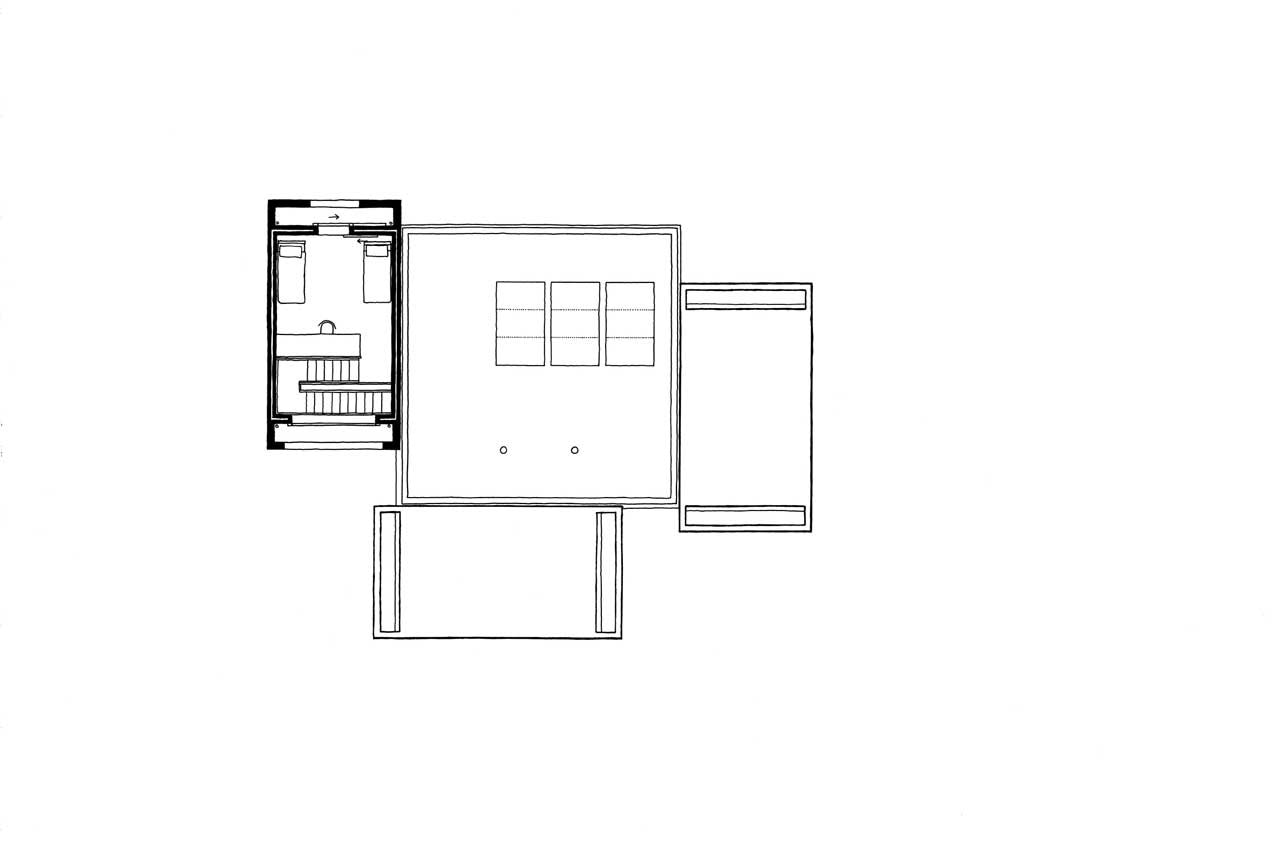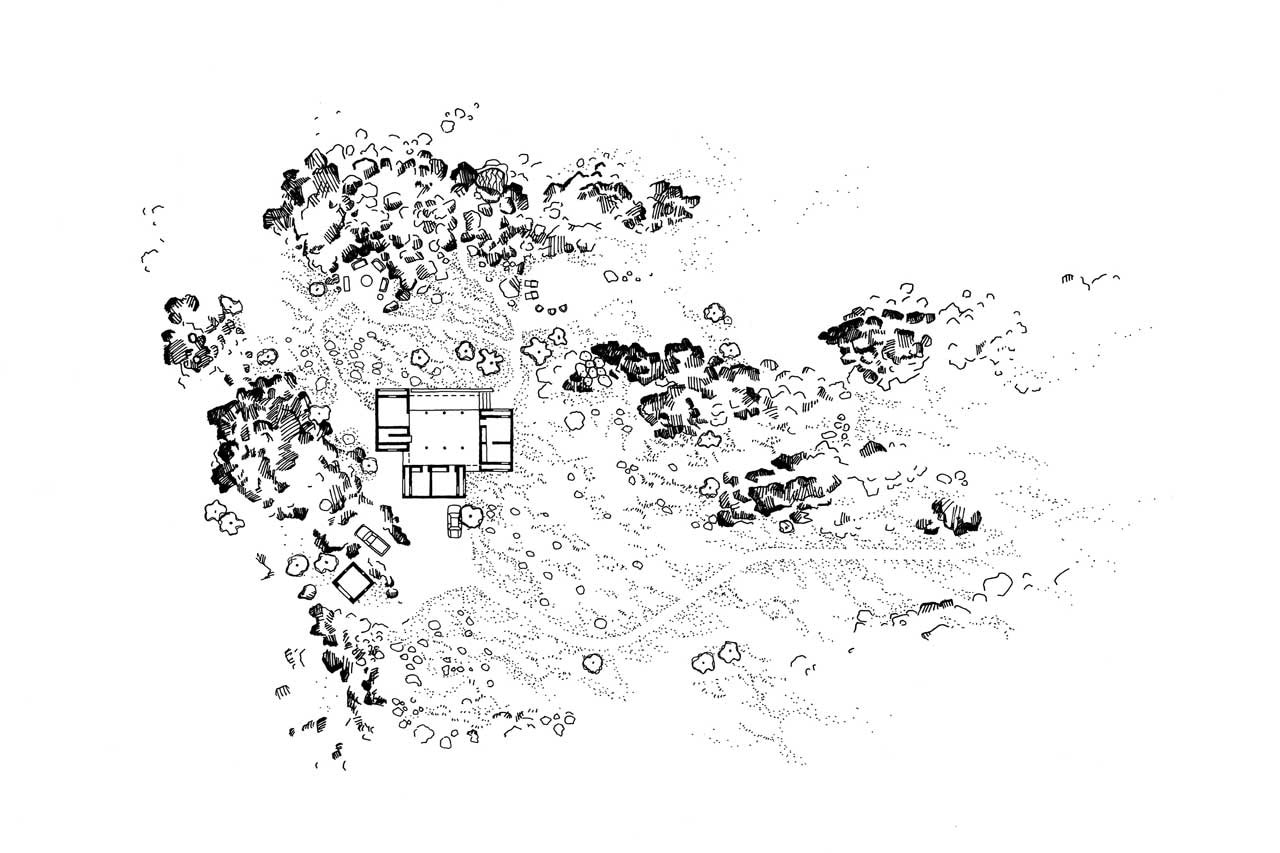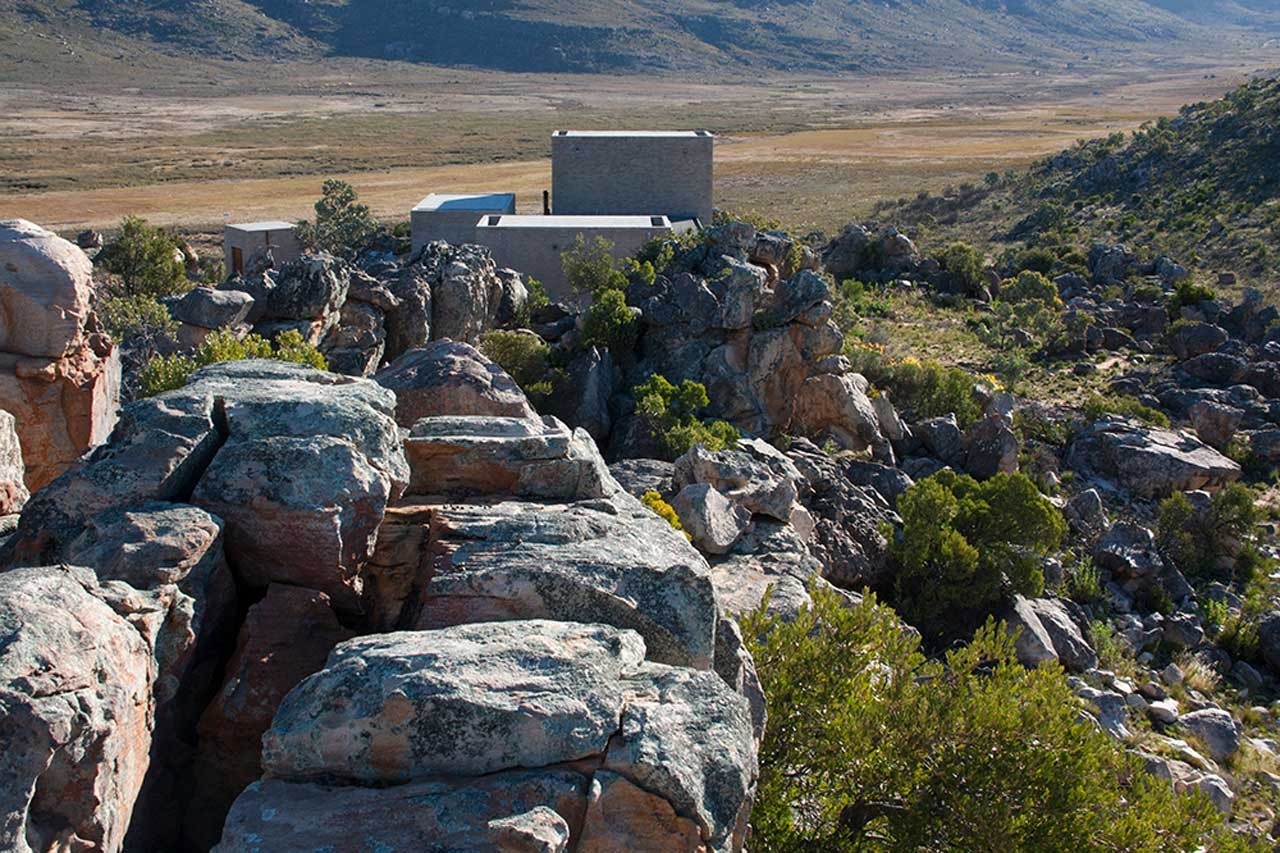
Thirdly, the setting was determined by its ability to compose a view from that specific location; the architects believe that a distant view is not rich enough a view and should be supplemented by articulate landscape features in the foreground and the middleground.
For instance, the selected site has rocky ridges right in front of the primary view to the north that creates a defined edge to the space of the house without needing any built means to achieve such a boundary.
The house should be fireproof and baboonproof, as the area is prone to periodical bush fires and troops of baboons which raid houses for food and will tamper with anything unsturdy which can be grabbed. However, the greatest challenge of the project is to see the site back in the architects’ office, 250 km away. With no marks of human life on site, (fences, electricity poles, building, etc.) it became very difficult to judge the scale of landscape features.
To make matters worse, conventional land surveying produces contour plans that describe the topography only with no ability to describe the plethora of rocks and bush.
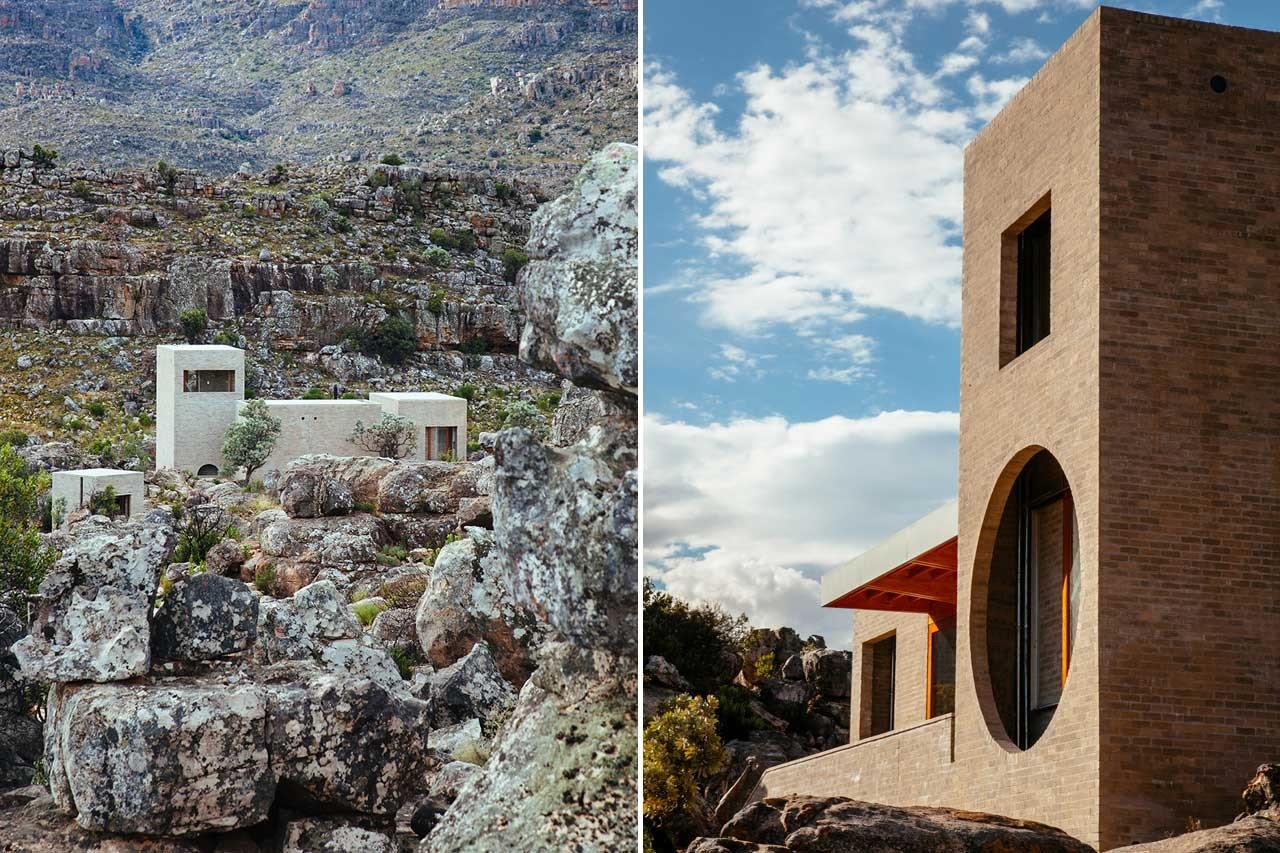
To design the building Wolff Architects had to develop a way to see the vegetation, rocks and topography simultaneously.
The solution was to have the landscape scanned with a 3D scanner, producing a Point Cloud. Instead of following the conventional route of using these scans to produce solid surfaces, they used the Point Cloud in its raw state to have the scale and character of the entire natural world present, while designing.
In a landscape where there are no marks of human intervention, it is hard to judge the scale of anything.
Scalelessness was therefore used as a primary characteristic of the architecture; all conventional external building elements (roofs, downpipes, windows, etc.) were concealed to deprive the observer of anything to judge the scale by. This was achieved by making a double wall on each of the short sides of the blocks which allows openings to be cut into the exterior in the massive brick alone.
All openings in the exterior envelope were exaggerated in size to diminish the apparent scale of the building from a distance.

House in the Mountains, Cederberg, South Africa
Program: single-family house
Architects: Wolff Architects
Completion: 2014

Ethimo's latest collection is all about weaves
Inspired by the traditional craftsmanship of Eastern Spain and patios, the new collection designed by Studio Zanellato/Bortotto reimagines the aesthetics of comfort.

